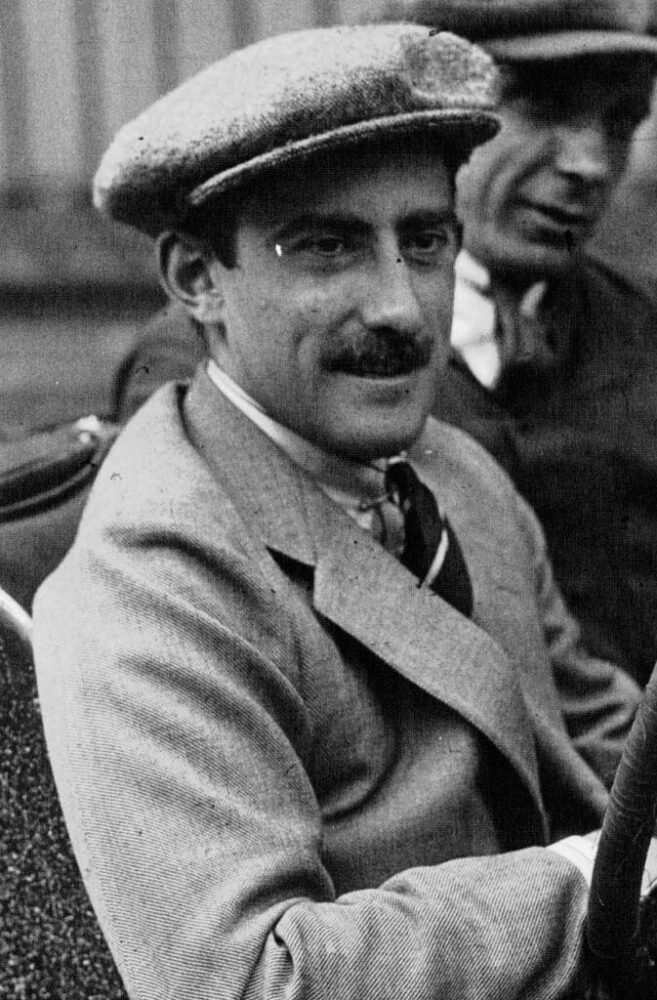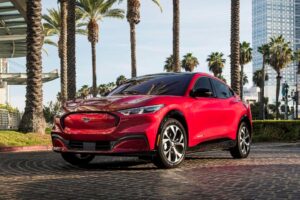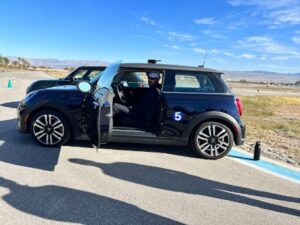
It’s the early 1920s. A young boy stands at the edge of the Brooklands Race Circuit, watching cars speed by, one of them driven by wealthy playboy Count Louis Zborowski. The driver and his car, Chitty Bang Bang, would later prove an inspiration for the boy, whose name was Ian Fleming.
Decades later, Fleming would recall the car when writing his only children’s book, “Chitty, Chitty, Bang, Bang,” in 1964. The film of the same name was released this week in 1968, starring Dick Van Dyke and Sally Ann Howes.
A fictional car rooted in fact
Born in 1895, Louis’s father was racecar driver William Eliot Morris Zborowski, while mother Margaret was a wealthy American heiress, granddaughter of William Astor. But racing claimed Louis’s father when Louis was 8 years old, dying while racing in Nice, France in 1903.
Nevertheless, Margaret purchased the Higham Park Estate near Canterbury, Kent for Louis, which covered 225 acres and included 12 houses. She lavished money on it before dying of cancer when Louis was 16, transforming him into one of the world’s wealthiest teenagers, with property in both the United Kingdom and the United States.
Married to a woman named Violet, Zborowski was wild, thinking nothing of building houses only to blow them up for his guests’ amusement.
And he loved racing.
Given his wealth, it’s not surprising he soon had a fleet of English cars, including four race cars, which are named Chitty Bang Bang. While ostensibly named for the noise they made, the phrase is actually lewd British military slang that refers to permission slips allowing soldiers to leave their barracks and visit local whorehouses.
More than anything, Zborowski wanted to drive for Mercedes, an ambition he realized in 1924 when he entered the Italian Grand Prix at Monza. But on the 44th lap, he lost control of his car and died in the subsequent collision with a tree. His wife, Violet, would go on to marry Paris Singer, one of 24 children of Isaac Singer of sewing machine fame, and an early resident of Palm Beach, Florida.
The birth of a magical car

Fast forward to 1961. Ian Fleming, now 53 years old, loves fast cars as much as he ever had. Now a successful author of novels starring fictional Secret Agent 007, aka James Bond, Fleming is a heavy smoker, consuming as many as 60 cigarettes a day. Not surprisingly, he suffers a heart attack in April 1961, and he is recuperating when his 8-year-old son Caspar says that Fleming loves James Bond more than him.
It leads him to start writing a children’s stories for his son, which he initially dubs “The Magical Car.” Contacting his friend and publisher Michael Howard, Fleming says, “I can assure you that I will be firing on all cylinders again before long … (and) I am writing a children’s book, so you will see that there is never a moment, even on the edge of the tomb, when I am not slaving for you.”
The story revolves around a “Paragon Panther,” the sole car built by the fictional Paragon Motorcar Co. before it files for bankruptcy. Restored by retired naval commander Caractacus Potts, the car soon proves to have a mind, and capabilities, of its own. Fleming based the car on his own Standard Tourer, as well as Zborowski’s Chitty Bang Bang, a customized Mercedes with a 23-liter 6-cylinder Maybach aero-engine.
By August 1964, Fleming suffers a second heart attack, dying on his son’s 12th birthday. He never lives to see his book published. Now titled “Chitty Chitty Bang Bang,” it’s initially published in three volumes, with illustrations by John Burningham.
The film follows

As it turns out, Fleming’s James Bond novels proved so successful, producer Albert R. Broccoli, who had made five James Bond films, opted to bring Fleming’s only children’s book to the big screen. He tapped Ken Hughes to direct. Hughes previously directed the Bond spoof, “Casino Royale.”
For the screenplay, Broccoli turned to Roald Dahl, author of such children’s books as “Charlie and the Chocolate Factory” and “James and the Giant Peach.” Dahl had also written the screenplay for 1967’s Bond flick, “You Only Live Twice” and took the job for one reason: it paid well. Dahl’s script was rejected, and was told by the producer it was a “piece of shit.”
“Once you get a rotten director, or an egocentric director, you’re dead,” Dahl said in a 1983 interview with The Twilight Zone magazine. “But they pay a lot, so you take the money and run.”
The film stars Dick Van Dyke, Sally Ann Howes, Lionel Jeffries and Benny Hill. But the real star is the car. Of the six Chitty Chitty Bang Bang cars built for the film, only one is a running car. Fully street legal, it boasts a cedar boat deck and is powered by a 3.0-liter Ford Essex 6-cylinder engine. It features an automatic transmission, as Van Dyke couldn’t drive a manual.

For the music, producers hired Richard and Robert Sherman who until then had written music solely for Disney films. Upon the film’s release, it led many to mistakenly assume it was a Disney film, particularly since Van Dyke had starred in Disney’s “Mary Poppins,” with music by the Sherman brothers.
Nevertheless, the Shermans were nominated for the Best Song Oscar for the song “Chitty Chitty Bang Bang.” They lost, however, to Michel Legrand and Alan and Marilyn Bergman, who won the Oscar for “The Windmills of Your Mind,” from “The Thomas Crown Affair.”
As it turns out, the film, budgeted at an estimated $10 million, only grossed $7,500,445 worldwide.
Reviewing the movie for the New York Times, Renata Adler wrote, “In spite of the dreadful title, ‘Chitty Chitty Bang Bang’ … is a fast, dense, friendly children’s musical, with something of the joys of singing together on a team bus on the way to a game.”
Nevertheless, “Chitty Chitty Bang Bang” never saw the success enjoyed by “The Love Bug,” a Walt Disney film released a year later that also involves a car with a mind of its own, albeit in modern times, not 1910 as with Chitty Chitty Bang Bang.
- SEO Powered Content & PR Distribution. Get Amplified Today.
- Platoblockchain. Web3 Metaverse Intelligence. Knowledge Amplified. Access Here.
- Source: https://www.thedetroitbureau.com/2022/12/the-rearview-mirror-ian-flemings-only-car-book/
- $10 million
- a
- actually
- Agent
- All
- Allowing
- ambition
- American
- amusement
- and
- April
- around
- attack
- AUGUST
- author
- Automatic
- Bankruptcy
- based
- Beach
- before
- BEST
- Big
- blow
- boasts
- boat
- bond
- book
- Books
- bring
- British
- brothers
- budgeted
- Bug
- Building
- built
- bus
- Cancer
- capabilities
- car
- cars
- Children
- Chocolate
- claimed
- control
- covered
- creator
- credit
- Crown
- day
- dead
- died
- direct
- Director
- Disney
- drive
- driven
- driver
- Dying
- Early
- Edge
- Engine
- English
- entered
- estate
- estimated
- Even
- EVER
- FAST
- Features
- fictional
- Files
- Film
- firing
- FLEET
- florida
- Ford
- Forward
- France
- friend
- friendly
- from
- fully
- game
- get
- giant
- Go
- Heart
- Heart Attack
- houses
- However
- HTTPS
- in
- included
- Including
- initially
- Inspiration
- Interview
- IT
- Job
- John
- joys
- Kingdom
- Leads
- Leave
- Led
- Legal
- Lionel
- live
- Lives
- local
- Long
- Lot
- Louis
- love
- loved
- machine
- made
- magazine
- manual
- many
- max-width
- Michael
- Military
- million
- mind
- mirror
- Modern
- moment
- money
- more
- mother
- movie
- Music
- musical
- name
- Named
- Near
- New
- New York
- New York Times
- Noise
- Old
- ONE
- original
- own
- paid
- palm
- paris
- Park
- particularly
- Pay
- permission
- plato
- Plato Data Intelligence
- PlatoData
- powered
- previously
- producer
- Producers
- property
- Prove
- proved
- proves
- published
- publisher
- purchased
- Race
- racing
- real
- realized
- reason
- refers
- release
- released
- Richard
- ROBERT
- Run
- running
- Said
- same
- Screen
- Second
- Secret
- Sherman
- since
- singer
- SIX
- So
- something
- son
- speed
- Spite
- standard
- stands
- Star
- Stars
- start
- States
- Still
- Stories
- Story
- street
- subsequent
- success
- successful
- such
- Suffers
- surprising
- Take
- Tapped
- team
- teenagers
- The
- The New York Times
- The Twilight Zone
- the United Kingdom
- their
- Thinking
- this week
- three
- times
- Title
- titled
- to
- together
- transforming
- Turned
- Twilight zone
- United
- United Kingdom
- United States
- volumes
- Walt Disney
- wanted
- watching
- Wealth
- week
- which
- while
- WHO
- wife
- Wild
- will
- windmills
- woman
- Won
- world’s
- worldwide
- would
- writing
- written
- year
- years
- young
- Your
- zephyrnet












